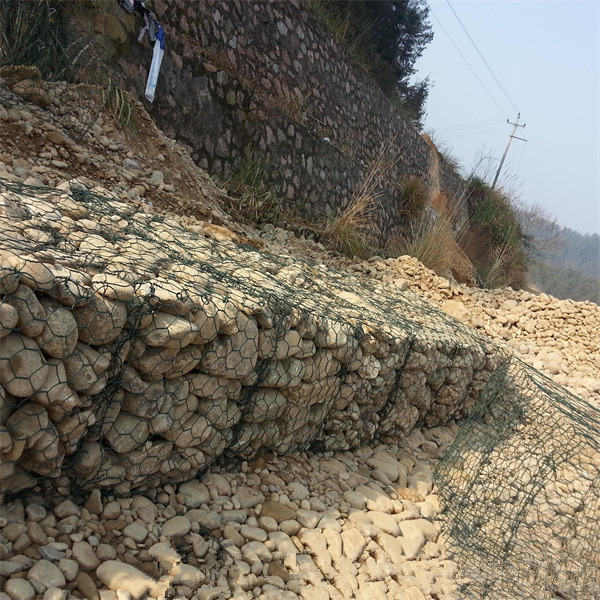Դկտ . 16, 2024 10:12 Back to list
gabion drop structure
Understanding Gabion Drop Structures An Effective Solution for Erosion Control
Gabion drop structures have emerged as an innovative solution for managing erosion and reducing hydraulic energy in waterways. These structures, composed primarily of wire mesh cages filled with stones or other materials, serve multiple purposes, from stabilizing banks to managing water flow in channels and rivers. Their simplicity, effectiveness, and environmental compatibility make them an increasingly popular choice among engineers and environmentalists alike.
What is a Gabion Drop Structure?
A gabion drop structure is essentially a step-like configuration that allows water to flow from a higher elevation to a lower one while dissipating energy. It consists of a series of gabion walls or baskets that are filled with rock or gravel. These baskets are placed in strategic locations within a watercourse to control the flow of water and prevent downstream erosion. By breaking the fall of water and spreading out its flow, gabion drop structures help reduce the velocity of water, minimizing the potential for further erosion along riverbanks or channel sides.
Design and Construction
The design process for a gabion drop structure starts with careful hydrological assessments. Engineers analyze the expected water flow, sediment transport, and potential erosion at various points along the waterway. This information guides the construction of the gabion drop structure to ensure it is capable of handling water flow effectively.
The construction of a gabion drop structure typically involves the following steps
1. Site Preparation The designated area is cleared of debris and vegetation to provide a stable foundation. 2. Installation of Gabions Wire mesh cages are assembled and filled with locally sourced rocks. This reduces transport costs and ensures the materials blend with the natural environment.
3. Placement The filled gabion baskets are arranged in a tiered fashion along the drop-off point, supporting each other and forming a series of steps.
Benefits of Gabion Drop Structures
Gabion drop structures offer several advantages over traditional erosion control methods
gabion drop structure

1. Enhanced Water Management These structures effectively manage water flow and minimize erosion, protecting adjacent landscapes and infrastructures.
2. Cost-Effectiveness The materials used, primarily local stones and wire mesh, are often less expensive than concrete or steel alternatives. Additionally, they require less maintenance over time.
3. Ecological Compatibility Gabions can encourage the growth of vegetation, creating a habitat for various species. The porous nature of the rocks allows for water infiltration, reducing runoff and promoting groundwater recharge.
4. Aesthetic Appeal Unlike traditional concrete structures, gabion drop structures can be designed to fit into the natural landscape, enhancing the visual appeal of riverbanks and natural areas.
5. Durability Gabions are resistant to weathering and can withstand the forces of flowing water, making them a long-lasting solution for erosion control.
Applications
Gabion drop structures are widely used in various applications, including
- River and Stream Management They help stabilize banks, prevent flooding, and enhance the ecological health of waterways.
- Road and Infrastructure Protection By controlling runoff and erosion, they safeguard roadways and bridges from the damaging effects of high water flows.
- Urban Drainage Systems Gabions can be integrated into urban environments, providing an effective way to manage stormwater while also offering beautification opportunities.
Conclusion
Gabion drop structures represent a sustainable and effective approach to managing erosion and controlling water flow in various settings. Their design flexibility, cost-effectiveness, and minimal ecological impact make them an attractive option for engineers and environmental planners. By leveraging natural materials, these structures not only mitigate erosion but also promote biodiversity and enhance the beauty of our natural landscapes. As the challenges of erosion and water management continue to evolve, gabion drop structures will undoubtedly play a key role in pioneering innovative solutions for the future.
-
HESCO Gabion Baskets for Coastal Erosion Prevention
NewsAug.22,2025
-
Longevity and Durability of River Rock Gabion Walls
NewsAug.22,2025
-
How to Integrate Gabion 3D Walls in Urban Planning
NewsAug.22,2025
-
Reno Mattress Gabion Applications in Civil Engineering
NewsAug.22,2025
-
How to Install Wire Mesh for Gabion Baskets Properly
NewsAug.22,2025
-
Best Materials for Filling a Chain Link Gabion
NewsAug.22,2025
-
Wire Mesh Thickness Impact on Gabion Wall Load Bearing
NewsAug.12,2025






